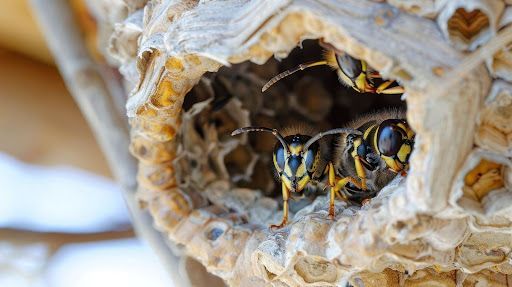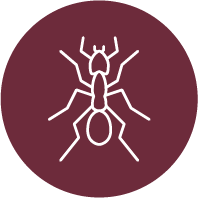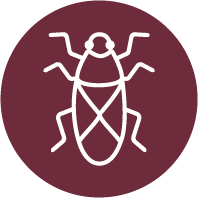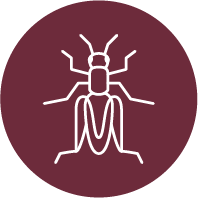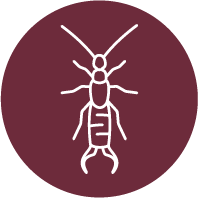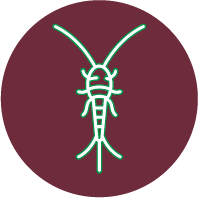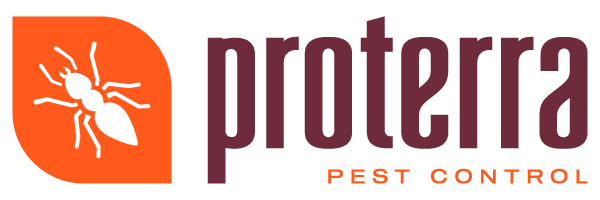The Lifecycle of Tri-City Pests: An Annual Overview
As the seasons change, so do the behaviors and patterns of the small, often unnoticed inhabitants of our urban landscapes: pests. These creatures, ranging from buzzing insects to stealthy rodents, follow a natural cycle that’s closely intertwined with the environment around them. Throughout the year, they adapt in fascinating ways to the shifting climates and available resources in our cities and towns. Let's take a closer look at how these critters change and move throughout the seasons, affecting our daily lives in the process.
Spring Awakening – Emergence and Early Activity
As the frost of winter fades, the Tri-Cities region witnesses a resurgence of life, not just in its flora but also in the form of common household pests. The warmer temperatures and blooming gardens signal the start of a busy season for ants, spiders, and wasps. Understanding the life stages these pests go through during spring can arm homeowners with the knowledge to implement effective pest control strategies.
Ant Colony Expansion and Foraging
As spring sets in, ant colonies, which have laid dormant during the cold, become a hive of activity. The queen awakens from her lethargy to increase her egg production, while the workers venture out in search of food to nourish the burgeoning colony. The scouts leave pheromone trails for other workers to follow, leading them to sources of food inside and outside their homes.
Spiders Emerging and Beginning to Spin Webs
Another frequent visitor in the spring is the spider, emerging from its crevices to capitalize on the abundance of prey. Spiders are beneficial as they feed on other insects, but their webs and presence can be unwelcome in homes. During this time, they become more visible as they spin their intricate webs, which serve both as homes and as traps for their next meal.
Wasp Queen Emergence and Nest Building
Similarly, the warmer weather wakes hibernating wasp queens. These queens seek out ideal locations to establish their nests, which are often found under eaves, in attics, or other sheltered areas around homes. Their focus is on building the nest and laying the first eggs that will hatch into worker wasps, taking on the duties of nest expansion and food gathering.
To gain a deeper understanding of these patterns, reading up on entomological studies can be informative.
Summertime Surge – Growth and Proliferation
With the arrival of summer, the Tri-Cities area sees an increase in pest activities. The longer days and higher temperatures provide the perfect environment for pests to grow and multiply.
Ant Reproduction and Satellite Colonies
This period is characterized by the reproductive phase of ants. Some species, like the odorous house ant, engage in nuptial flights where winged males and queens mate. After these flights, fertilized queens seek new locations to establish satellite colonies, which can be a nuisance for homeowners.
Spider Population Peak and Hunting Behaviors
Spiders reach their population peak during the summertime. You may notice an increased number of these arachnids prowling in your garden or the corners of your house. They actively hunt for insects at night, which could lead to a conspicuous buildup of webs.
Wasps and Their Increasing Nest Size
The wasp colonies continue to grow throughout the summer, with the nest reaching its maximum size towards the end. The increasing number of worker wasps can often lead to more frequent encounters with humans, especially in areas where food or sweet drinks are accessible.
For local insights, keeping an eye on recent
news articles regarding summer pest infestations can be informative and can aid in staying ahead of common pest issues.
It's evident that with each passing season, the Tri-Cities' homeowners must adapt their approach to manage the evolving pest populations. Recognizing these seasonal patterns is the first step toward maintaining a pest-free environment.
Autumn Preparations – Nesting and Stockpiling
As the vibrant leaves of the Tri-Cities landscape transform to hues of amber and gold, the local pests begin their preparations for the upcoming colder months. This transitional period prompts significant behavioral changes as many species start securing their survival through the winter.
Ants' Stockpiling and Nesting Deeper Underground
Ant colonies focus on enhancing their nests' insulation and gather as much food as they can, creating ample stores to last through winter. They excavate deeper into the ground to protect themselves from the cold and reduce their activity to conserve energy, effectively entering a state of reduced metabolism known as diapause.
Spiders Seeking Indoor Shelter
While some spiders perish as temperatures drop, others seek refuge inside homes and other structures. Homeowners may observe an uptick in indoor spider sightings as these eight-legged guests find their way through cracks and crevices seeking warmth and a plentiful supply of indoor insects.
Wasps Becoming More Aggressive as Resources Dwindle
During autumn, wasp activity can become more noticeable and potentially more aggressive as their natural food sources become scarce. This scarcity prompts them to explore further afield, which can unfortunately lead to increased interactions with humans, particularly around food and waste areas.
A natural form of pest control comes into play as many predators take advantage of these insects' vulnerabilities during the fall. This ecosystem's cyclic nature helps maintain a balance, but homeowners can contribute by securing potential entry points before pests seek winter shelter.
Winter Dormancy – Survival Strategies
With winter's chill taking firm hold over the Tri-Cities, many pests enter a survival mode to weather the harsh conditions. This is a critical stage of their lifecycle when their visibility significantly decreases, but they are not entirely inactive.
Ants Going Deeper Underground to Maintain Colony Warmth
To combat the cold, ants further retreat into the earth, relying on the geothermal warmth of the soil to keep their colony viable. Here, in the deeper recesses, they can ride out the winter with the food they've stockpiled from earlier seasons.
Spiders Entering Diapause or Continuing Indoor Activity
Surviving winter spiders either enter diapause, which slows their growth and metabolism to conserve resources, or, if already indoors, continue their lifecycle relatively unaffected by the seasonal change. Those indoors will continue to hunt for pests that make their way inside homes.
Most Wasps Die Off Except for Hibernating Queens
For wasps, winter is a time of great attrition, with the majority of the colony succumbing to the cold. Only the young queens survive by finding protected spaces to hibernate and emerge in the spring to start new colonies.
The wintertime offers homeowners the opportunity to assess and prepare for the next cycle of pest activity. This is a strategic time to fix any vulnerabilities in the home's defense against pests, such as sealing cracks and attending to areas of moisture accumulation that could attract pests in the upcoming seasons.
While the colder months may provide a reprieve from active infestations, it is also the period to lay the groundwork for year-round pest management. Winterizing a home against these critters parts from simply being a cure to becoming a preventative measure.
Pest Control Considerations for Each Season
Pest management is a year-round task, and each season demands specific strategies to keep common pests at bay. Homeowners must adopt measures that align with the pests' life cycles to ensure maximum effectiveness in prevention and control.
Spring Preemptive Measures to Prevent Nesting and Infestation
During spring, it's advisable to carry out preemptive measures such as clearing debris from the yard, trimming back trees and bushes from the house, and sealing any cracks or crevices that might serve as entry points for ants and spiders. It's also a season to keep an eye out for early signs of wasp nests.
Summer Active Management to Control Population Growth
In the warmer months, activity should focus on limiting pest reproduction and growth. This can include ensuring that food sources are securely stored, standing water is eliminated to prevent ant hydration, and using appropriate, eco-friendly products to address any emerging infestations.
Autumn Pest Proofing to Prevent Indoor Invasions
As the weather cools, pests look for warmth. Autumn is the time to intensify home sealing efforts, repair screens and put in place measures to deter pests; such as using weather stripping and door sweeps. Being mindful of indoor clutter, woodpiles, and unnecessary moisture can further dissuade pest encroachment.
Winter Inspections and Preparations for the Next Year’s Cycle
The quiet of winter provides the perfect opportunity for thorough inspections and preparations for the upcoming year. This could mean scheduling professional home assessments to identify potential vulnerabilities before pests become active again in the spring.
The Role of Professional Pest Control Services
The expertise that comes with professional pest control services can be invaluable in managing pest lifecycles and ensuring a pest-free home. Professionals bring a nuanced understanding of pest behaviors, enabling them to devise and execute targeted prevention strategies.
For homeowners in the Tri-Cities, utilizing a service that offers regular, season-specific treatments can save time and ensure a continuous defense against pests. The use of eco-friendly products aligns with the regional values of environmental stewardship and community health.
Ongoing monitoring and maintenance by pest control experts can catch the early signs of infestation and address them promptly, an essential aspect of diligent home care.
This overview of the lifecycle of Tri-City pests throughout the year underscores the importance of seasonal awareness in effective pest management. With a strategic approach, homeowners can prevent infestations before they start, keeping their homes safer and more comfortable.
Understanding these patterns is not just a matter of convenience; it's about ensuring the longevity and health of the very spaces we live in. Being proactive and investing in regular pest control measures can bolster the integrity of our homes and the well-being of our families.
Arming oneself with knowledge and choosing the right professional partners in pest control can lead to a harmonious balance between nature and our living spaces, even in an area as ecologically diverse as Washington's Tri-Cities.
If you're fascinated by how pests behave throughout the year and how seasonal changes affect their lifecycle.
Contact Proterra Pest Control for expert advice on local pests and effective protection strategies.
